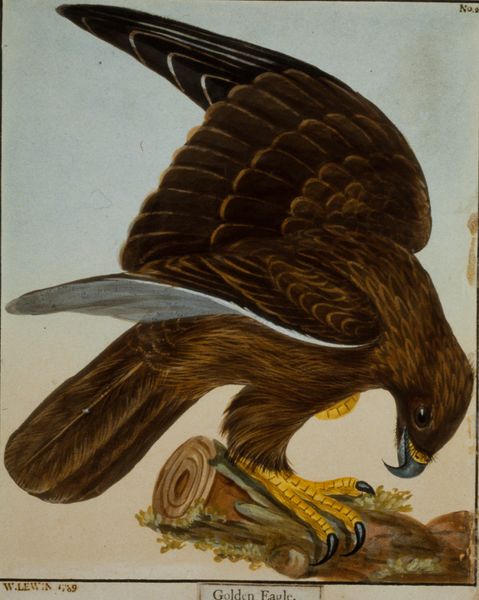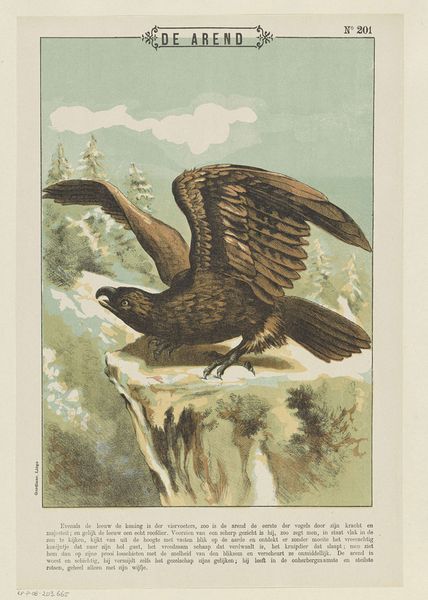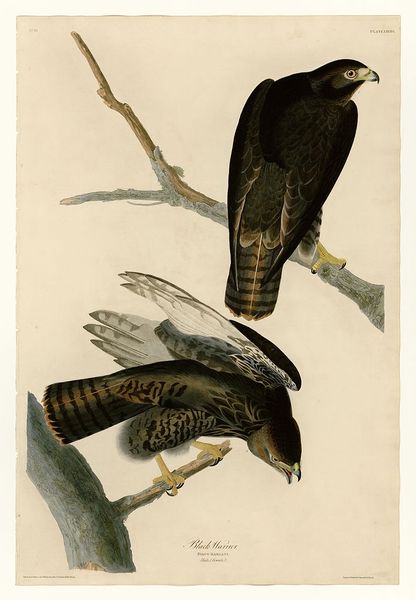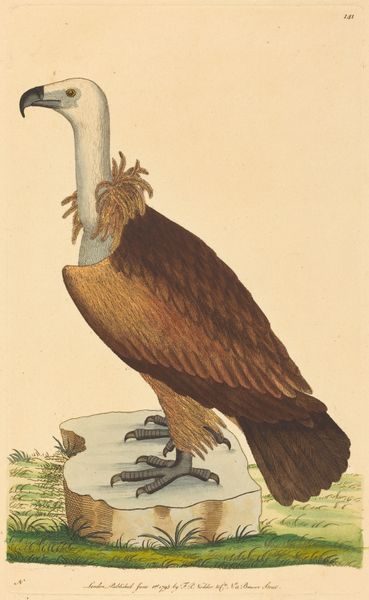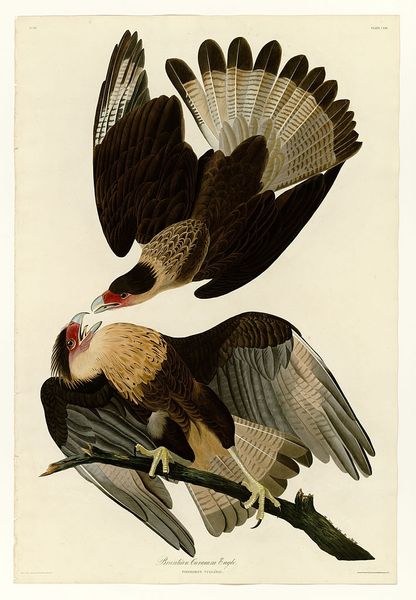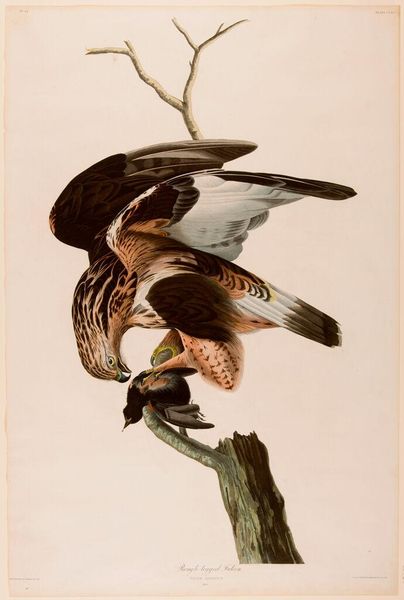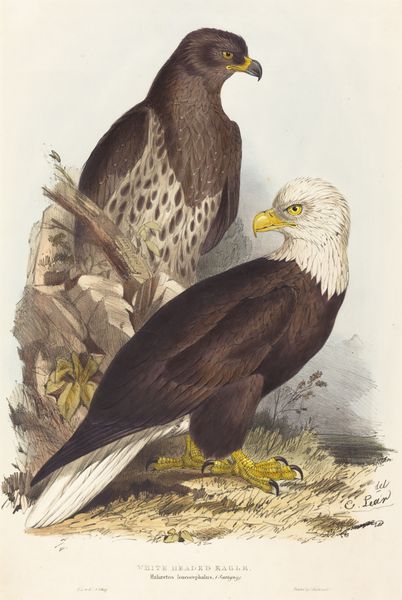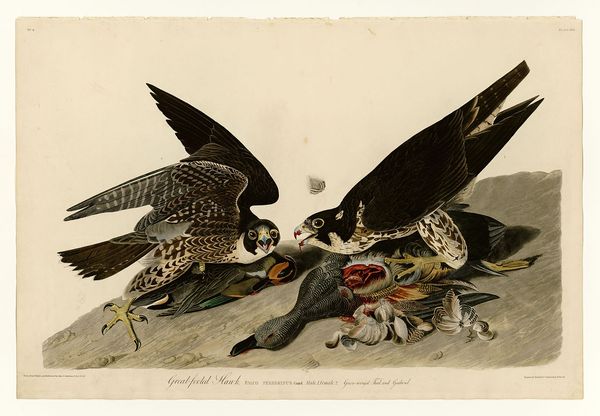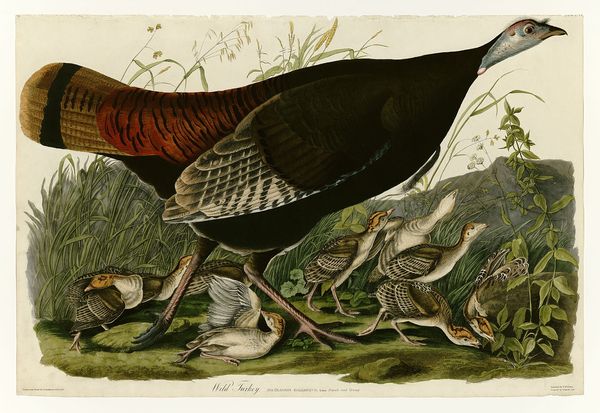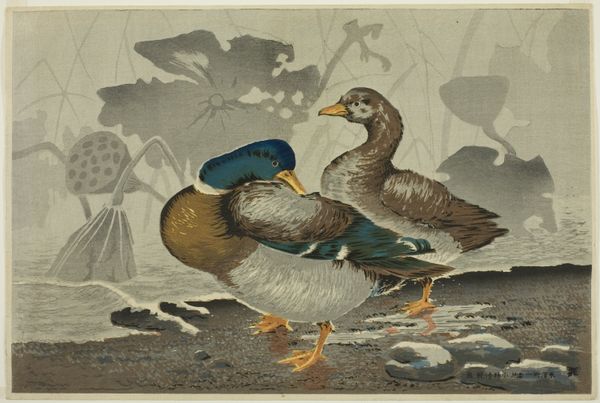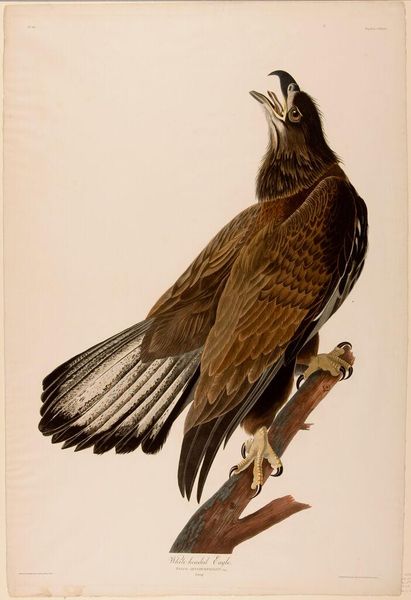
drawing, painting, print, etching, paper, watercolor
#
drawing
#
painting
# print
#
etching
#
landscape
#
caricature
#
bird
#
figuration
#
paper
#
watercolor
#
romanticism
#
hudson-river-school
#
academic-art
#
realism
Copyright: Public domain
John James Audubon created this illustration of a white-headed eagle, now known as the bald eagle, as part of his ambitious project to document the birds of America. Audubon aimed to depict birds in their natural habitats, often staging dramatic scenes. Here, the eagle is shown clutching a large fish, a catfish, symbolizing power and survival. This imagery resonated deeply in a young nation seeking to define its identity. The bald eagle, with its fierce gaze and commanding presence, was adopted as the national symbol in 1782, embodying American ideals of freedom and strength. Yet, this romantic portrayal obscures a more complex history. As European settlers expanded westward, they decimated native populations and ecosystems, disrupting the delicate balance of nature. Audubon himself was not immune to these contradictions, benefiting from a system that privileged white, male authority. Consider, then, how this image continues to shape our understanding of national identity and environmental stewardship.
Comments
No comments
Be the first to comment and join the conversation on the ultimate creative platform.

